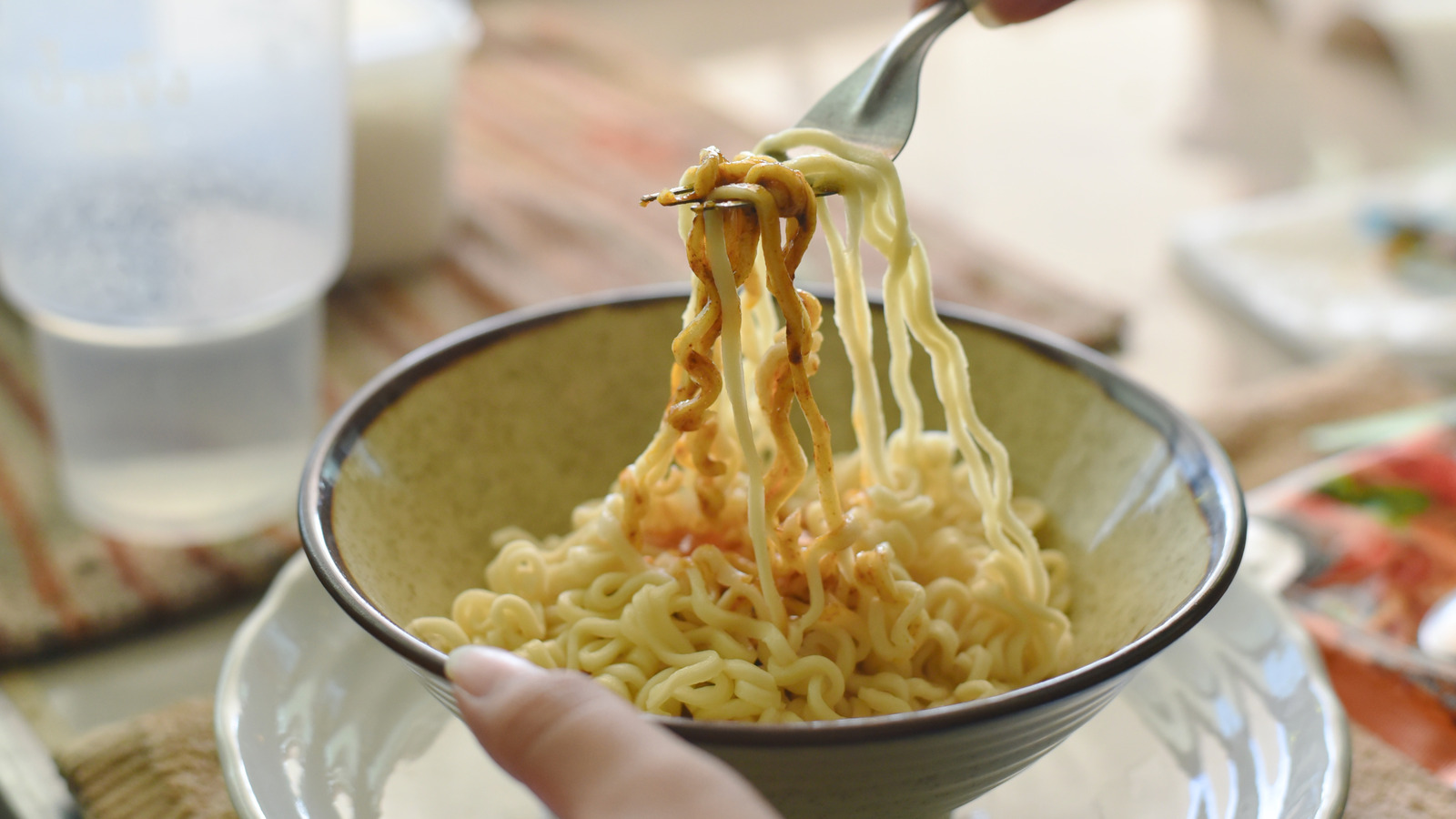
"If you look at the back of a 3-ounce packet of Maruchan chicken ramen, you'll see that eating the entire thing gives you 1,520 milligrams of sodium, 66% of the daily recommended value. Most of this comes from the seasoning rather than the noodles, as salt is in the "less than 1%" category of the noodle ingredients, but the leading ingredient for the soup base."
"This means cutting out half of the seasoning packet will get you fairly close to cutting out half of that sodium content, causing less negative effects on your blood pressure. You could even save the extra seasoning and spread it out across other recipes, meaning it won't go to waste, but you also won't take in all that sodium at once."
"While using less ramen seasoning undoubtedly lowers the sodium levels of the meal, it can also make it less flavorful. While some people might prefer the milder taste the lack of sodium brings, it will likely seem very bland to people used to the regular flavor. Luckily, there are tons of ways to spruce up instant ramen and make it more flavorful using healthier ingredients."
Instant ramen seasoning packets contain high amounts of sodium, largely concentrated in the seasoning rather than the noodles. A 3-ounce packet of Maruchan chicken ramen contains 1,520 milligrams of sodium, about 66% of the daily recommended value. Cutting the seasoning packet in half substantially reduces sodium intake and can lower negative effects on blood pressure. Extra seasoning can be saved and used in other recipes. Reducing seasoning can make the noodles taste bland, but adding vegetables and other healthier ingredients restores flavor while keeping sodium lower.
Read at Tasting Table
Unable to calculate read time
Collection
[
|
...
]